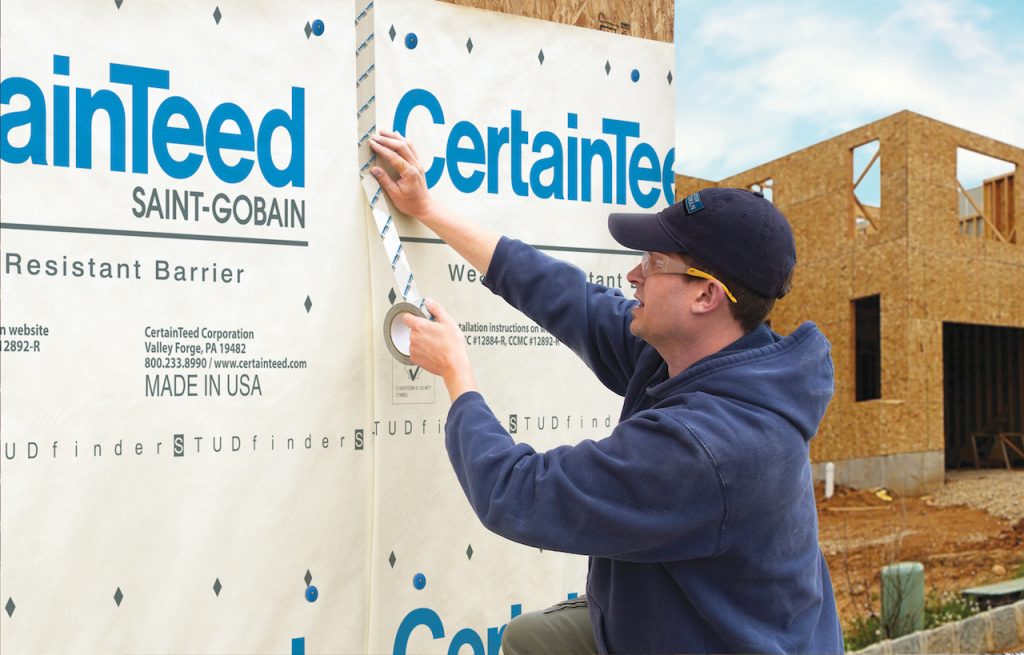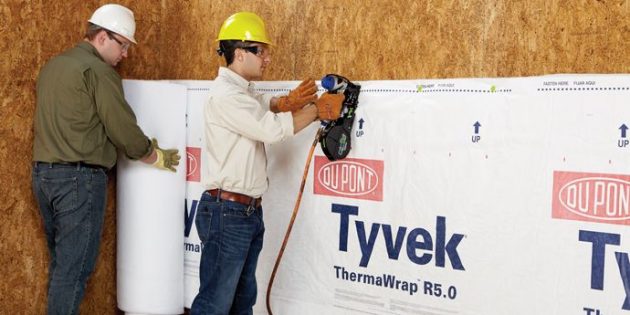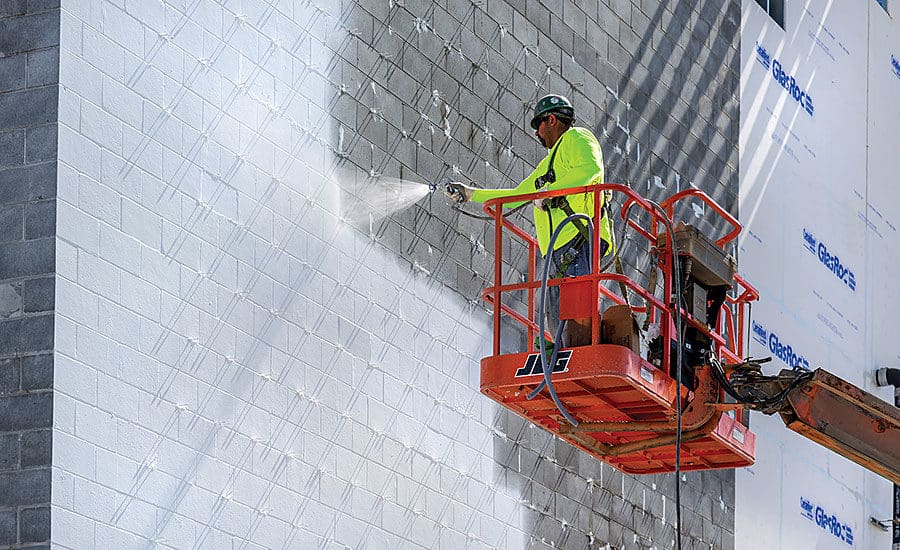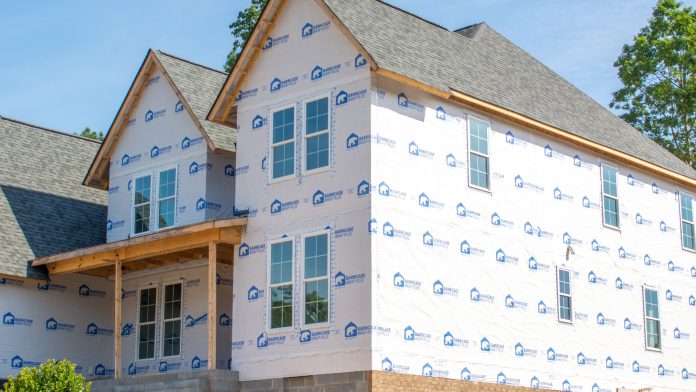More than just a paper, housewrap is installed on the exterior surface of the walls in new and remodeled homes. This wrap goes up prior to installing the siding material. But what role does this material play and what are the quality requirements for installation?
Purpose of Housewrap
There are two primary responsibilities of housewrap installed on homes today. Let’s take a look at each of these.
Air Infiltration: One of the major roles of housewrap is to cut down on the amount of air that comes through the exterior walls. By reducing the amount of air coming through the wall, we can improve the overall energy efficiency of the home. Remember, a home is built using many different pieces of wood, including studs, plates, sheathing…etc., so there are gaps and cracks created. The housewrap helps to cover up these gaps and slow down air infiltration.

Drainage Plane: Exterior siding is made to look pretty and provides a first defense against water infiltration. The housewrap under the siding material provides a secondary drainage plane when water gets through the siding. Have you ever looked close at vinyl siding on a home? There are so many ways for rain water to get past it. This is why the panels of siding have weep holes at the bottom to let water back out. The housewrap is a second layer of defense to keep that moisture from getting at your home’s delicate components.
Proper Installation
Quality Tips to Maximize Effectiveness
Installing housewrap on a home prior to siding is like wrapping a gift. There’s is a right and a wrong way to do it. Here we share the major tips for getting a quality job.
Overlapped Seams: Housewrap comes on a role in nine or ten foot widths. This is because most homes have eight or nine foot wall heights plus a rim joist to cover. So, where will be a need to overlap the horizontal joints. It’s important to follow the manufacturer’s directions, but in general, the horizontal overlap should be a minimum of twelve inches with the top piece coming down over the top of the lower piece. This will allow water to shed off the wrap and down the face of the building. The vertical overlap should be a minimum of six inches.

Seams Tapped: It’s important to tape the seams on the housewrap to provide a tight seal. Most wrap manufacturers have tape that is compatible with their product. You can also look for generic brands that provide similar holding power at reduced prices.
Cap Nails: If there is any length of time between when you install the wrap and when the siding goes up, you will want to use cap nails. Cap nails have a wide flange near the head that holds the paper in place. When a new home is being built, weeks can pass after installing the wrap before siding is installed. Winds can pull standard nails or staples through the wrap, causing the material to come loose.
Vertical Surfaces: Housewrap should be installed on all vertical wall surfaces. This includes walls that are located at unconditioned spaces. In these areas, the wrap provides a secondary drainage plane but does nothing for air infiltration.
Windows/Doors: Housewrap should be wrapped back into the rough openings for doors and windows. This will allow the units to be set into the opening and sealed to the housewrap to prevent water and air infiltration.
Flashing: When the roofing contractor installs the shingles, it’s important for all roof-to-wall flashings to be sealed properly. This can be accomplished by taping the top of the flashings to the wall surface/housewrap. Or, they can be placed under the housewrap with the wrap lapping over top of the shingle tins.
Cost

The cost for housewrap material ranges from five to fifteen cents per square foot of wall space to be covered. Of course this doesn’t cover the installation, but if you are building a new home, the installation can be quite simple to apply as the walls are built.
As mentioned in the quality installation tips, you will want to have the seams taped to improve the efficiency of the material. Tapes can range in price from a few dollars per role up to $10.
Alternatives

Housewrap is one of the most popular options for sealing up the exterior of the home from water and air infiltration. However, there are a few other alternatives that can be used.
Liquid Weather Barrier: One of the newer products out on the market is a weatherization product that gets rolled onto the exterior of the building before siding goes up. The big benefit of this material is that it provides a very tight, continuous seal. The installation and material can be quite expensive however.
Rainscreen: There are rainscreens available that come in rolls and are applied directly to the exterior wall. These screens provide an air gap between the siding material and the surface of the wall. This allows for air to get in there and dry out the surface between rains.
Felt: One of the oldest methods for sealing up the exterior of a home is felt paper. This is similar to the material used under roof shingle to keep moisture out.


















